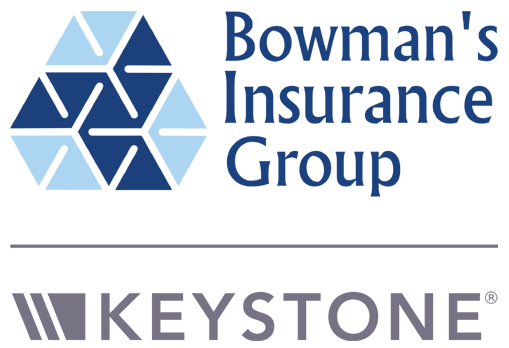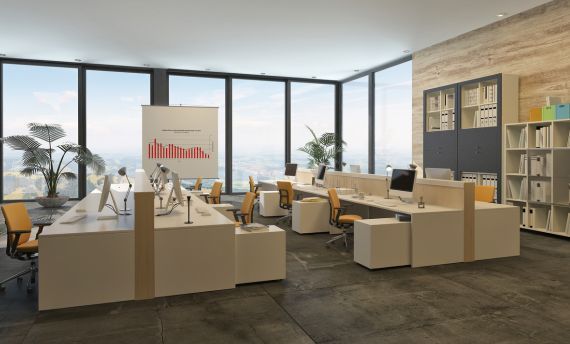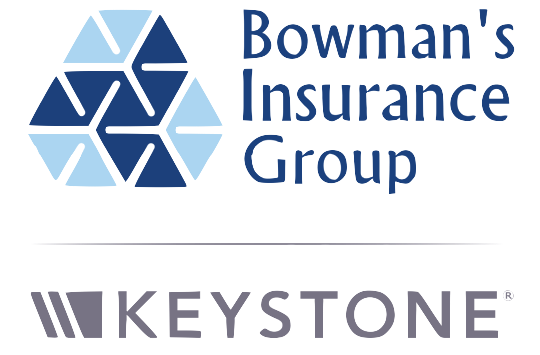
In recent years, businesses in Pennsylvania have been grappling with the rising costs of commercial auto insurance. This trend has raised concerns among business owners who rely on vehicles for their operations. Understanding the factors driving these increases is crucial for making informed decisions about insurance coverage and budgeting. In this article, we will explore the reasons behind the escalating costs of commercial auto insurance in Pennsylvania, the impact on businesses, and strategies for managing these expenses.
Understanding Commercial Auto Insurance
Commercial auto insurance is designed to protect businesses from financial losses resulting from accidents involving vehicles used for business purposes. This coverage is essential for companies that operate fleets, deliver goods, or provide transportation services. Unlike personal auto insurance, commercial policies account for the unique risks associated with business operations. For instance, a delivery truck may face different hazards than a personal vehicle, such as increased exposure to accidents during busy delivery hours or the risk of theft while parked at various locations. As such, commercial auto insurance is tailored to address these specific challenges, ensuring that businesses can operate smoothly without the looming threat of financial ruin from unforeseen incidents.
The Importance of Coverage
Having adequate commercial auto insurance is vital for protecting a business's assets and ensuring compliance with state laws. In Pennsylvania, businesses are required to carry a minimum level of liability insurance, which covers damages to other parties in the event of an accident. However, many businesses opt for higher coverage limits to safeguard against potential lawsuits and claims. Moreover, the financial implications of an accident can extend beyond immediate repair costs; businesses may also face lost income during vehicle downtime, increased insurance premiums, and potential legal fees. Therefore, investing in comprehensive coverage not only fulfills legal obligations but also fortifies a business's financial stability in the face of adversity.
Types of Coverage Available
Commercial auto insurance typically includes several types of coverage, such as liability coverage, collision coverage, comprehensive coverage, and uninsured/underinsured motorist coverage. Each type serves a different purpose and can be tailored to meet the specific needs of a business. Understanding these options is key to selecting the right policy. For example, collision coverage helps cover the costs of repairing or replacing a vehicle after an accident, regardless of who is at fault, while comprehensive coverage protects against non-collision-related incidents, such as theft, vandalism, or natural disasters. Additionally, businesses that rely heavily on their vehicles may consider adding rental reimbursement coverage, which can help mitigate costs if a vehicle is in the shop for repairs. This level of customization ensures that businesses can find a policy that not only meets their legal requirements but also aligns with their operational needs and risk management strategies.
Factors Contributing to Rising Costs
The increase in commercial auto insurance costs in Pennsylvania can be attributed to several interconnected factors. These include rising claims costs, changes in legislation, and broader economic trends. Let’s delve deeper into each of these elements.
Increased Claims Frequency and Severity
One of the primary drivers of rising insurance costs is the increase in both the frequency and severity of claims. As more businesses operate vehicles on the road, the likelihood of accidents increases. Furthermore, the costs associated with accidents have risen due to higher medical expenses, vehicle repair costs, and legal fees.
Insurance companies are responding to these trends by raising premiums to cover potential losses. This means that businesses may find themselves paying more for coverage, even if their own claims history is relatively clean. Additionally, the rise of distracted driving, particularly due to mobile device usage, has contributed to a spike in accidents, further complicating the risk landscape for insurers. The increase in severe accidents not only affects individual businesses but also impacts the overall risk pool, leading to a domino effect of rising rates across the industry.
Changes in Legislation
Legislative changes can also impact commercial auto insurance rates. In Pennsylvania, laws regarding insurance requirements, liability limits, and compensation for injured parties have evolved, often leading to higher costs for insurers. For instance, changes in no-fault insurance laws or increased minimum coverage requirements can lead to higher premiums.
Additionally, as the legal landscape shifts, insurance companies may adjust their pricing models to account for potential liabilities, further driving up costs for businesses. Recent legislative efforts aimed at enhancing consumer protections can inadvertently lead to increased expenses for insurers, who must then pass those costs onto policyholders. Moreover, the introduction of new regulations surrounding driver safety and vehicle emissions can necessitate additional training and compliance costs for businesses, which can also influence insurance rates.
Economic Factors
The broader economy plays a significant role in shaping insurance costs. Inflation, supply chain disruptions, and increasing repair costs for vehicles all contribute to rising premiums. For instance, the cost of parts and labor has surged in recent years, leading to higher repair bills after accidents.
Moreover, economic uncertainty can lead to fluctuations in the insurance market, causing providers to raise rates as a precaution against potential losses. These economic pressures can trickle down to businesses, resulting in higher insurance costs. The ongoing impacts of global events, such as pandemics or geopolitical tensions, can also disrupt supply chains, leading to shortages of essential vehicle components. This not only affects repair costs but can also delay the return of vehicles to service, further straining businesses' operational capabilities. As companies navigate these challenges, they may find themselves needing to reassess their insurance needs, potentially leading to more comprehensive coverage that, while beneficial, also comes at a higher price point.
The Impact on Businesses
The rising costs of commercial auto insurance can have significant implications for businesses in Pennsylvania. From budgeting challenges to operational adjustments, the effects are far-reaching.
Budgeting Challenges
As insurance premiums increase, businesses may face challenges in budgeting for their operational expenses. Higher insurance costs can strain finances, especially for small businesses that operate on tight margins. This may force owners to make difficult decisions, such as cutting back on other essential expenses or even reducing their fleet size.
Moreover, businesses may need to allocate more resources to insurance premiums, limiting their ability to invest in growth or improvements. This can create a cycle where rising costs hinder a business's ability to thrive. For instance, funds that could have been directed toward marketing initiatives or technology upgrades are instead diverted to cover escalating insurance premiums, stunting innovation and competitiveness within the market. As a result, businesses may find themselves at a disadvantage compared to competitors who can afford to invest in these critical areas.
Operational Adjustments
In response to rising insurance costs, some businesses may need to make operational adjustments. This could include implementing stricter safety protocols, investing in driver training programs, or even reevaluating their vehicle usage policies. By taking proactive measures to reduce risks, businesses may be able to mitigate some of the cost increases.
Additionally, businesses might explore alternative transportation options, such as outsourcing deliveries or utilizing rideshare services, to reduce their reliance on commercial vehicles and, consequently, their insurance costs. This shift not only helps manage expenses but can also lead to increased flexibility in operations. For example, by outsourcing logistics, businesses can focus on their core competencies while leaving transportation to specialized providers who may have more efficient systems in place. Furthermore, leveraging technology such as route optimization software can enhance delivery efficiency, potentially offsetting some of the financial burdens associated with higher insurance premiums.
Strategies for Managing Rising Insurance Costs
While the rising costs of commercial auto insurance can be daunting, there are several strategies that businesses can employ to manage these expenses effectively.
Shop Around for Competitive Rates
One of the most effective ways to manage insurance costs is to shop around for competitive rates. Different insurance providers may offer varying premiums for similar coverage, so it’s essential to compare quotes from multiple insurers. Working with an experienced insurance broker can also help businesses navigate the options available to them.
Additionally, businesses should review their policies regularly to ensure they are not overpaying for coverage they no longer need or that does not align with their current operations. This proactive approach can uncover potential savings and ensure that the business is adequately protected without unnecessary expenses. Furthermore, leveraging technology and online comparison tools can streamline this process, allowing businesses to quickly assess a range of options and make informed decisions.
Implement Risk Management Practices
Investing in risk management practices can significantly reduce the likelihood of accidents and claims, ultimately lowering insurance costs. This includes implementing driver safety training programs, conducting regular vehicle maintenance, and utilizing telematics to monitor driver behavior.
By fostering a culture of safety and accountability, businesses can demonstrate to insurers that they are taking proactive steps to minimize risks, which may result in lower premiums over time. Additionally, engaging employees in safety initiatives can lead to a more conscientious workforce, where drivers are more aware of their surroundings and the importance of safe driving practices. Regular safety meetings and workshops can reinforce these values and keep safety at the forefront of daily operations.
Consider Higher Deductibles
Another strategy for managing insurance costs is to consider opting for higher deductibles. While this means that businesses will pay more out of pocket in the event of a claim, it can lead to lower premium costs. Businesses should weigh the potential savings against their financial capacity to handle higher deductibles when making this decision.
Ultimately, finding the right balance between premium costs and deductibles is crucial for effective financial planning. It may also be beneficial to create a dedicated reserve fund to cover potential claims, which can provide peace of mind and financial stability. This approach not only helps in managing cash flow but also positions the business as a more attractive candidate for insurers, potentially leading to further discounts or favorable terms in the future.
Future Outlook for Commercial Auto Insurance in Pennsylvania
As businesses in Pennsylvania continue to navigate the challenges of rising commercial auto insurance costs, it’s essential to consider the future outlook for the industry. Several trends may shape the landscape in the coming years.
Technological Advancements
Technological advancements are likely to play a significant role in the future of commercial auto insurance. The rise of telematics and usage-based insurance models allows insurers to assess risk more accurately based on real-time data. This could lead to more personalized premiums that reflect individual driving behaviors rather than broad categorizations.
Furthermore, advancements in vehicle safety technology, such as automatic braking systems and collision avoidance features, may help reduce accident rates, ultimately leading to lower insurance costs for businesses. The integration of artificial intelligence in claims processing is also anticipated to streamline operations, allowing for quicker responses to claims and potentially lowering administrative costs for insurers. This efficiency could translate into savings for policyholders, making it a win-win situation for both parties involved.
Legislative Changes
Legislative changes will continue to impact the commercial auto insurance landscape. As lawmakers address issues related to insurance requirements and liability, businesses must stay informed about potential changes that could affect their coverage and costs. Engaging with industry associations and advocacy groups can help businesses remain proactive in navigating these developments. Additionally, the push for more stringent environmental regulations may lead to a shift in the types of vehicles businesses choose to insure, as electric and hybrid vehicles become more prevalent. This shift could not only affect insurance rates but also influence the overall risk profile of commercial fleets.
Market Competition
Increased competition among insurance providers may also influence pricing in the commercial auto insurance market. As more companies enter the market, businesses may benefit from competitive rates and innovative coverage options. This competition could help stabilize rising costs and provide businesses with more choices when selecting insurance coverage. Moreover, the emergence of insurtech companies is revolutionizing the traditional insurance model, offering tech-savvy solutions that appeal to a younger demographic of business owners. These startups often leverage data analytics and machine learning to create tailored policies, which could further disrupt the status quo and encourage established insurers to adapt their offerings to retain their customer base.
Conclusion
The rising costs of commercial auto insurance in Pennsylvania present a significant challenge for businesses, but understanding the underlying factors and implementing effective strategies can help mitigate these expenses. By staying informed about market trends, exploring competitive options, and investing in risk management practices, businesses can navigate this complex landscape more effectively.
Ultimately, proactive planning and informed decision-making will be key to managing commercial auto insurance costs and ensuring the long-term success of businesses in Pennsylvania.













